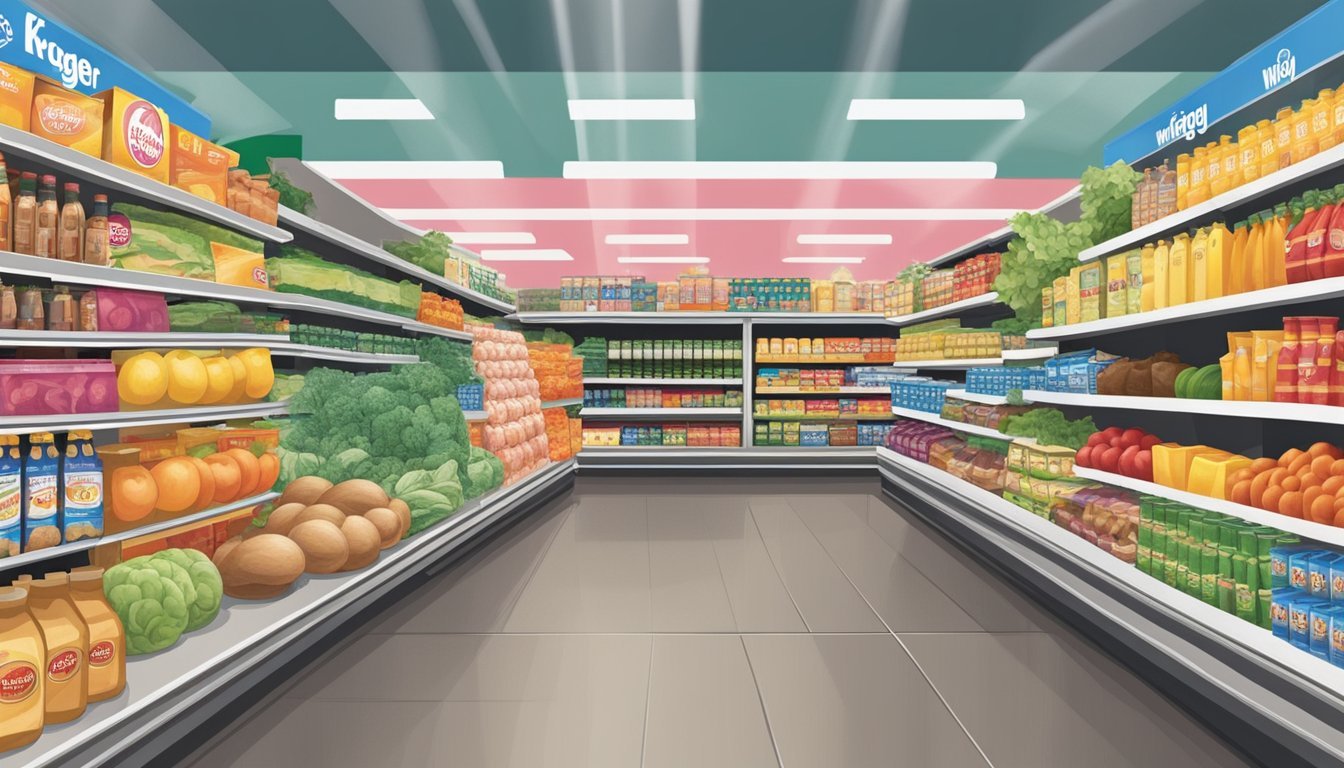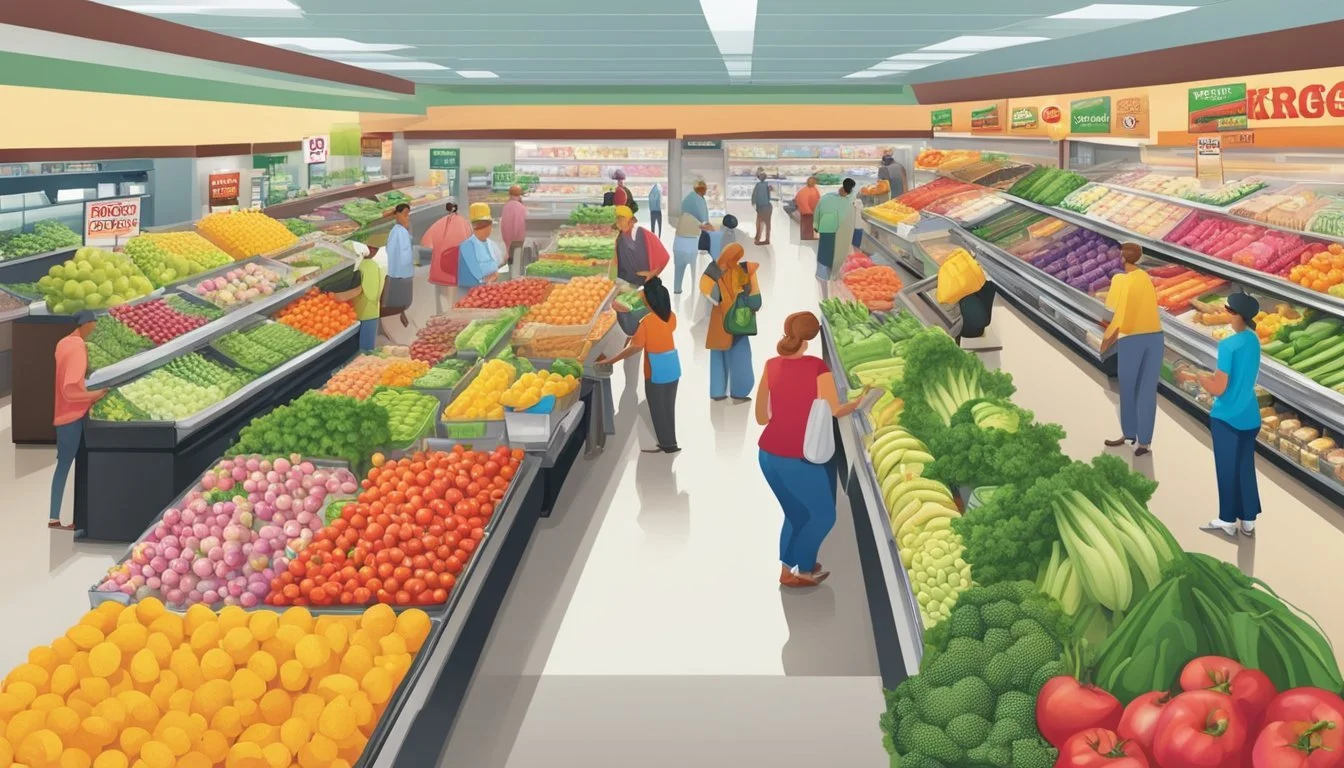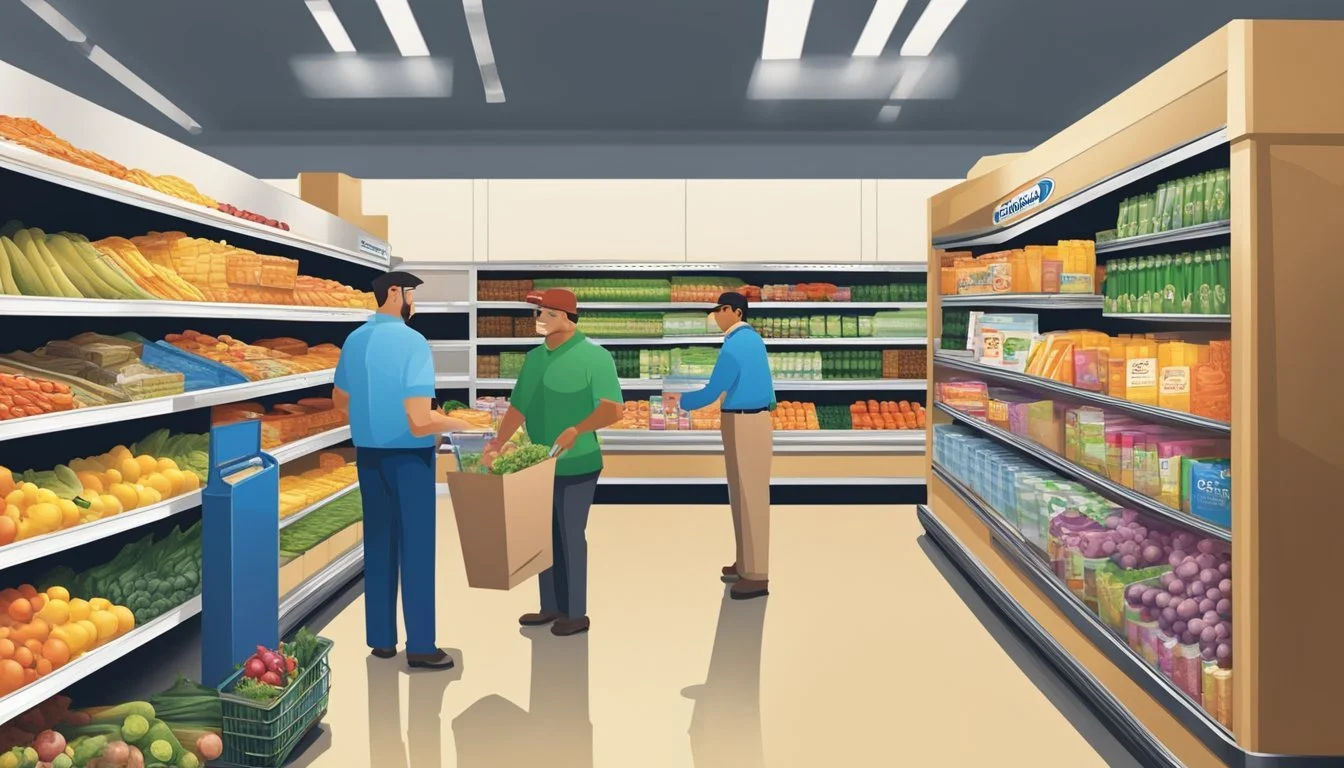Kroger vs Piggly Wiggly
Comparing Grocery Shopping Experiences
Part of Our Grocery Store Guide with Details on Kroger and Piggly Wiggly
The grocery store landscape in the U.S. is vast and varied, with chains ranging from regional favorites to nationwide giants. Among these, Kroger and Piggly Wiggly have emerged as prominent players in the industry. Kroger stands as one of the country's largest supermarket chains, offering customers a one-stop shopping experience with a wide array of products. Its sheer size and purchasing power often allow for competitive pricing and an extensive selection, making it a go-to choice for many shoppers.
Piggly Wiggly, on the other hand, carries its own charm and historical significance, being credited with introducing several features now standard in grocery stores. Although smaller than Kroger, Piggly Wiggly provides a more personable shopping experience, often catering to the specifics of the regions where its stores are located. This grocer has maintained customer loyalty through its regional familiarity and commitment to local communities, which some shoppers find more appealing than the offerings of larger chains.
Deciding which grocery store is better is a complex task that involves examining various factors, including product variety, pricing, customer service, store atmosphere, and locations. Both Kroger and Piggly Wiggly have their respective strengths and weaknesses, directly impacting the shopping experience. This analysis provides an informed comparison between the two, allowing consumers to discern which grocer may best serve their needs.
Company Backgrounds
In the competitive landscape of American supermarkets, both Kroger and Piggly Wiggly stand as significant players. Each has a rich history that contributes to their current market positions as major grocery chains.
Kroger's History
Kroger, founded by Barney Kroger in 1883, has its roots in Cincinnati, Ohio. What started as a single grocery store has grown into one of the largest supermarket chains in the United States. Kroger's growth has been characterized by a series of strategic mergers and acquisitions, expanding its presence across many states.
Founding Year: 1883
Original Location: Cincinnati, Ohio
Growth Strategy: Mergers and acquisitions
Piggly Wiggly's History
Piggly Wiggly, established by Clarence Saunders in 1916 in Memphis, Tennessee, is recognized for introducing the concept of self-service grocery shopping. This innovative approach revolutionized the grocery industry, allowing it to become a well-known name among American grocery stores.
Founding Year: 1916
Original Location: Memphis, Tennessee
Innovation: Self-service shopping model
Store Brand and Product Range
When comparing Kroger to Piggly Wiggly, their respective store brands and the range of products they offer are crucial factors for shoppers. Each grocery store chain provides customers with a variety of choices in key areas such as store brand items, produce, meat, baked goods, and frozen foods.
Kroger's Private Label
Kroger boasts an extensive private label lineup that often competes with national brands in terms of quality and price. Under its store brand, shoppers find a comprehensive selection spanning various categories:
Produce: Fresh produce including organic options.
Meat: A range of meats from standard cuts to organically sourced options.
Baked Goods: Bread, pastries, and other items, both conventional and gluten-free.
Frozen Foods: A wide assortment of frozen fruits, vegetables, meals, and desserts.
Notably, Kroger's private label encompasses several tiers, such as the budget-friendly Kroger brand, the natural and organic Simple Truth, and the premium Private Selection. This stratification allows shoppers to choose products that best meet their preferences and budget.
Piggly Wiggly's Offerings
Piggly Wiggly, although generally smaller in scale, offers a curated selection of store-brand products focusing on providing value to their customers. Their product range includes:
Produce: A variety of fresh produce with an emphasis on seasonal items.
Meat: Selections of meats that cater to local preferences and standards.
Baked Goods: A selection of staple baked goods, with an emphasis on traditional recipes.
Frozen Foods: Basic frozen food essentials that cater to the needs of their customer base.
Piggly Wiggly's offerings may not be as expansive as Kroger's, yet they maintain a commitment to quality and competitive pricing within their range of store-brand products. Their focus is on providing a local, community-centric shopping experience.
Price Comparison and Value
When choosing between Kroger and Piggly Wiggly, consumers often consider the price and value of the products offered. Each store has its strategy to offer savings to customers, be it through everyday low prices or through discounts and deals.
Everyday Prices
At Piggly Wiggly, shoppers may find that everyday prices for many grocery items are slightly lower than at Kroger. For example, Piggly Wiggly competes closely with price giants like Walmart, suggesting that their pricing strategy aims to provide affordability. Kroger, on the other hand, offers a different value proposition, often showcasing a wide range of products that might command a higher price due to their branding or quality promise.
Piggly Wiggly: Often less expensive for daily staples.
Kroger: May have higher prices but a diverse product range.
Discounts and Deals
Both Kroger and Piggly Wiggly run various promotional deals that can provide significant savings. Kroger frequently offers digital coupons and loyalty card discounts that can lower the total cost at checkout. Additionally, Kroger is known for its weekly sales and "Buy 5, Save $5" deals that are popular among bargain hunters.
Piggly Wiggly also has its own set of deals, often localizing their discounts to cater to the community's needs and preferences. Their weekly ad typically includes a variety of deals on select items.
Kroger:
Digital Coupons: Available through their app or website.
Loyalty Discounts: Savings for card members.
Weekly Sales: Rotating special offers on different products.
Piggly Wiggly:
Localized Deals: Tailored discounts to serve the local community.
Weekly Ad: A selection of products on promotion each week.
In summary, while Piggly Wiggly may provide lower everyday prices, Kroger offers a comprehensive system of discounts and deals, potentially enhancing the overall shopping value for their customers.
Store Experience
When comparing Kroger and Piggly Wiggly, shoppers will find distinct differences in store layout and design, customer service, and checkout experience that may influence their preference between the two grocery store chains.
Store Layout and Design
Kroger stores typically have a consistent layout, which allows customers to find items quickly. The aisles are labeled clearly, and the stores maintain high standards of cleanliness. Shelving is strategically organized, highlighting promotions and popular products. Piggly Wiggly also presents a straightforward design, with a hometown grocery store feel that some shoppers find appealing. Both stores prioritize having clean floors and well-managed shopping cart availability.
Cleanliness: Essential to the shopping experience; both chains implement rigorous cleaning protocols.
Shopping Carts: Generally in good supply and well-maintained, facilitating the ease of shopping.
Customer Service
Customer service at Kroger is known for being efficient and helpful, with staff members often available to assist customers in finding products. Piggly Wiggly, with its smaller store footprint, often delivers a more personalized customer service experience. Employees in both stores tend to be knowledgeable about the products they sell, which enhances the overall shopping experience.
Helpfulness: Staff are trained to provide assistance promptly.
Knowledge: Employees exhibit an understanding of the store layout and product locations.
Checkout Experience
Kroger has invested in technology to streamline the checkout process, offering self-checkout options for a faster experience. Piggly Wiggly’s checkout lanes may not boast the same technological advancements, but they do provide a personable service. Both stores endeavor to keep checkout lines short, ensuring that the final stage of shopping is as stress-free as possible.
Self-Checkout: Available at Kroger for customers seeking efficiency.
Service: Personal touch at Piggly Wiggly can make a lasting impression.
Quality of Goods
When comparing Kroger and Piggly Wiggly, it is essential to focus on the quality of goods each store offers. The factors crucial to this comparison include the freshness of produce, the quality of meat, and the offerings of the bakery and deli.
Freshness of Produce
At Kroger, customers often find a wide variety of fruits and vegetables, which are routinely restocked to ensure freshness. The emphasis is on providing seasonal and locally-sourced produce when available. Piggly Wiggly also prioritizes the freshness of their produce, with some stores offering locally grown options that highlight quality and support local farmers.
Quality of Meat
Kroger is known for its extensive selection of meats, ranging from standard cuts to organic and grass-fed options. Their meat department focuses on quality and includes a selection of in-house, store-prepared options. Piggly Wiggly, while possibly having a smaller selection, still maintains a commitment to providing customers with high-quality meat products.
Bakery and Deli
Kroger's bakery section boasts a variety of freshly baked bread and pastries, alongside a well-stocked deli with a range of cheeses, meats, and store-prepared foods. Piggly Wiggly's bakery and deli departments may vary by location but typically offer a selection of bread, cakes, and deli items that cater to local tastes and preferences.
Location and Accessibility
When comparing Kroger and Piggly Wiggly, their geographic footprint and the convenience of their store locations are critical factors for consumers to consider.
Regional Accessibility
Kroger operates a vast network of grocery stores across the United States. It has a significant presence with locations in 35 states, offering wide regional accessibility to shoppers. In contrast, Piggly Wiggly has a more concentrated regional focus, largely found in the Southern and Midwestern parts of the United States.
Kroger: Stores in 35 states.
Piggly Wiggly: Primarily in the South and Midwest.
Store Proximity
Kroger stores are generally easy to locate due to their large quantity, which tends to provide close proximity for many consumers. For example, in Pittsburgh, shoppers can easily find multiple Kroger locations, enhancing convenience and accessibility.
Kroger in Pittsburgh: Several locations available for accessibility.
Piggly Wiggly: May not be present in areas such as Pittsburgh, leading to limited store proximity for those residents.
Consumer Perception
When comparing Kroger and Piggly Wiggly, consumer sentiment provides valuable insights into the strengths and weaknesses of each brand, affecting their competitive standing.
Brand Reputation
Kroger, with a wider national presence, is often perceived as a dependable source for a diverse range of products. Consumers associate the brand with convenience and variety, which plays a significant role in its reputation. On the other hand, Piggly Wiggly, commonly found in the Southern United States, holds a nostalgic charm and is typically regarded for its local community feel and customer service.
Consumer Reports Insights
In terms of consumer reports, specific rankings or numerical ratings can illuminate public perception of each chain within the grocery category. For instance:
Kroger:
Range of Products: Highly rated
Store Cleanliness: Generally well-regarded
Piggly Wiggly:
Customer Service: Often praised
Store Ambiance: Valued for its local feel
Consumer Reports sometimes reveals contrasting views on different chains, but consistently emphasizes aspects such as product quality and shopping experience. These factors significantly influence consumer perception and contribute to the holistic reputation of a grocery store brand.
Market Presence and Competition
Kroger and Piggly Wiggly both represent significant entities in the U.S. supermarket sector, each with their own strategic market presence. Factors such as store count, geographic coverage, and customer base are determinants of their competitive stance in the industry.
Competition with Walmart and Target
Walmart and Target are two colossal players, wielding vast influence due to their extensive store networks and pricing strategies. Both corporations have accelerated their push into groceries, augmenting their already substantial general merchandise offerings with expansive food selections.
Walmart operates over 4,700 stores in the U.S. alone, making it the nation's largest retailer by far.
Target, while smaller in store count, has successfully integrated grocery sections into its well-established discount retail model.
Both Walmart and Target compete fiercely on price and availability, often overshadowing traditional grocers on these fronts. Kroger, the largest supermarket chain in the U.S., counters with its own diverse portfolio of products and services, including fuel centers and online platforms.
Competitive Positioning in the Grocery Industry
The grocery sector is fragmented beyond the major national chains, with regional players like Winn-Dixie and upscale markets such as Whole Foods Market carving out their niches.
Winn-Dixie is noteworthy for its cost-effective private label offerings, often undercutting national brand pricing.
Whole Foods Market, acquired by Amazon, is distinguished by its focus on organic and premium products, targeting a higher-income demographic.
Kroger's competitive positioning is multifaceted, involving an expansive network of stores and a tailored marketing strategy that appeals to a wide customer base. Piggly Wiggly, though smaller, remains competitive by maintaining a strong presence in the southeastern U.S., often seen as a community-oriented alternative. Both Kroger and Piggly Wiggly face continued pressure from the expanding market share of non-traditional grocery retailers like Walmart and Target.
Conclusion
When comparing Piggly Wiggly and Kroger, consumers often note the differences in store experience, product selection, and pricing strategies. Piggly Wiggly has a niche appeal, with a local-centric approach that can resonate with customers who prefer a personable shopping environment. Its parent company's recent acquisition of stores from Kroger and Albertsons highlights a strategic expansion, signaling potential improvements in its offerings and reach.
Kroger, on the other hand, operates on a much larger scale and typically offers a broader selection of goods, including an array of dessert options that cater to diverse preferences. While its size allows for competitive pricing, particular emphasis is placed on convenience through Kroger's extensive network and additional services.
Price-wise, while Kroger may offer discounts through economies of scale, Piggly Wiggly is known for competitive pricing, with some reports suggesting cost savings on everyday items like bread and chicken. This could be a deciding factor for budget-conscious consumers.
It's imperative to note that grocery store preferences can differ widely among individuals, often influenced by factors such as location, store layouts, product variety, and customer service. Both Kroger and Piggly Wiggly have their unique strengths that appeal to certain market segments.
In conclusion, there is no one-size-fits-all answer to which grocery store is better. Shoppers are encouraged to consider their priorities—whether it's price, product quality, location, or store environment—when selecting their preferred grocery destination.







